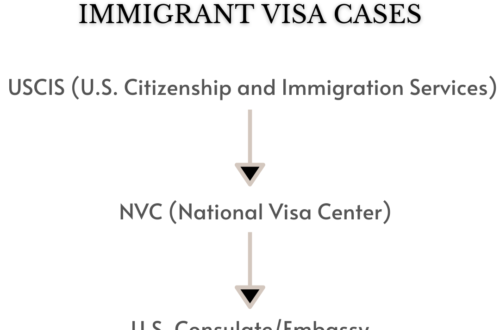
Overview of the L-1A Visa – Intracompany Tranfers
The L-1A Intracompany Transferee nonimmigrant visa classification allows a U.S. employer to transfer an employee in a managerial or executive position from a foreign office to the United States. This can also include a foreign company that doesn’t have a U.S. based company yet but wants to set up an office in the U.S. The foreign company can send an executive to the U.S. under the L-1A visa with the purpose of establishing a U.S. based company.
L-1 visas are only for transfers within the same company but are good options for foreign companies to expand into the U.S. Often, after the seven-year limit, many L-1A employees apply for permanent residency through the EB1-C program (multinational executives employed by the same company who want to continue their services in the U.S. may apply and do not have to file a Labor Certification), making it one of the fastest ways to gain a green card. There are no annual limitations of the number of L-1A visas available each year and there are no minimum or maximum wage requirements.
Qualifications of Employer
- There must be a qualifying relationship with a foreign company. Qualifying organizations usually include parent companies, a branch, affiliate companies, or a subsidiary company.
- The foreign company must currently be or will be, doing business in the United States and one other country (directly or through a qualifying organization stated above) as an employer. Doing business means regular and continuous establishment of goods and/or services by a qualifying organization in the United States and abroad. The mere presence of an agent or office of the qualifying organization in the United States does not automatically meet this requirement.
Qualifications of Employee
Only executives and managers can qualify under the L-1A category. The qualifications for what USCIS defines as an executive and manager are limited and strictly enforced. A manager or executive must help plan, direct, and maintain control of the major functions of the business. He/she works through the other employees to achieve the company’s goal. Executive Capacity usually refers to the employee’s ability to make business decisions without a lot of oversight. Usually, this is for those whose work is related to the operational management of the business and not simply supervision over employees. It’s important to note that it’s not enough to have the words “manager” or “executive” in an employee’s title.
An executive’s duties may include:
- Directing management of the company or a large portion of the company
- Establishing the goals of the company
- Has great flexibility in decision making
- Does not receive much supervision from higher level executives
Managerial capacity generally refers to some who:
- Manages a component or department of the company
- Has the ability to supervise and control the work of employees
- May hire or terminate employees
- Has day-to-day control over operations.
See section 101(a) (44) of the Immigration and Nationality Act, as amended, and 8 CFR 214.2(l)(1)(ii) for complete definitions. A detailed description of the role the executive or manager must be included when filing the petition.
Eligibility Requirements
- The L-1A employee has to have worked for the qualifying organization abroad for at least 1 continuous year in the last 3 years before filing the immigration petition
- The L-1A employee will provide services in an executive or managerial capacity for a branch of the same employer or one of its qualifying organizations in the U.S.
New Offices
If the office will be new in the United States, the employer must show:
- The employer has a physical location for the business.
- The employee has been employed as an executive or manager for 1 year within the last 3 years.
- The new office in the United States will need an executive or managerial role within one year of the petition approval.
Length of Stay
If the employee is entering the United States to open a new office, he/she will be allowed to stay one year. All other employees of the company can stay for three years. All L-1A employees have the possibility of extending their stay up to seven years at two-year increments.
Families of L-1A Workers
The employee can bring his/her spouse and children who are under 21 years of age into the United States. The family members will apply for L-2 nonimmigrant classification and usually are granted the same length of stay as the L-1A employee. L-2 spouses may work if they file Form I-765, Application for Employment Authorization.
Blanket Petitions
Some companies may file for multiple intracompany transfers in advance instead of filing them individually. This is faster and offers more flexibility for the employer. Once a blanket petition has been approved, the employer only needs to file one form, the I-129S, Nonimmigrant Petition Based on Blanket L Petition. Qualifications for a Blanket Petition include:
- The petitioner is engaged in commercial trade business or services.
- The petitioner already has an established physical location that has been doing business for at least one year.
- The petitioner has at least three branches, affiliates, or subsidiaries. They can be domestic or foreign.
- In addition to the above qualifications, the petitioner must meet ONE of the following:
- Annual sales in the United States of $25 million or more
- Have a workforce of United States employees of at least 1,000.
- Has previously had 10 L-1 petitions approved within the last twelve months.
Benefits of the L-1A Visa
L-1A visas allow companies to transfer already trained executives and managers to the U.S. to facilitate the growth of the U.S. branch, or to facilitate the opening of a new U.S. branch. This can oftentimes be easier than recruiting a new manager or executive. For larger multinational companies, some of their executives and managers have worked in various company locations across the world, which allows them to bring unique insight when coming to the U.S. that can help facilitate growth and innovation.
L-1A visa holders can work, travel, and live legally in the United States. In addition, the L-1 visa holder’s minor children can come to the U.S. and study, and a spouse will be able to obtain a work permit to work.
As stated above, there are no numerical limitations on L-1s like there are for H-1Bs. One of the biggest benefits is the ability for the visa holder to apply for lawful permanent residency (AKA green card) while on L-1 status, and spouses and unmarried children under 21 will also be able to get lawful permanent residency status.




